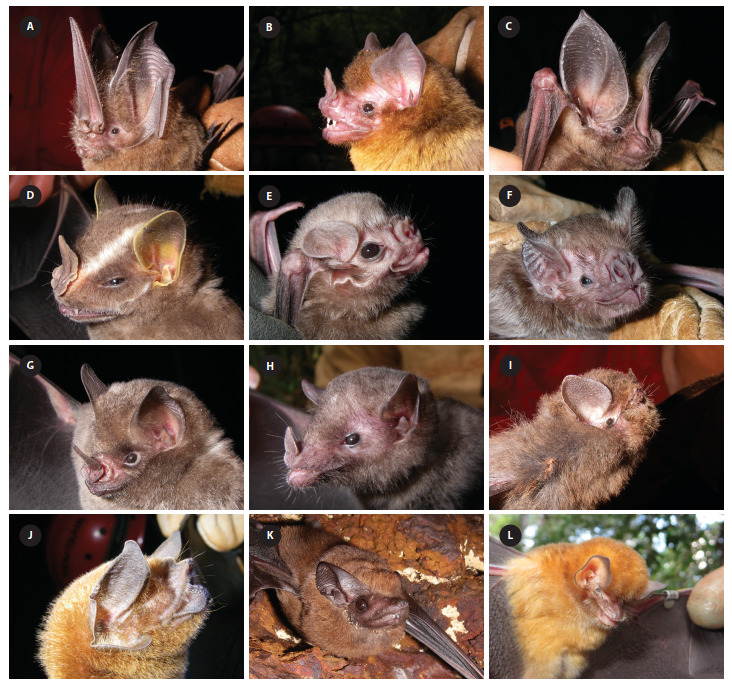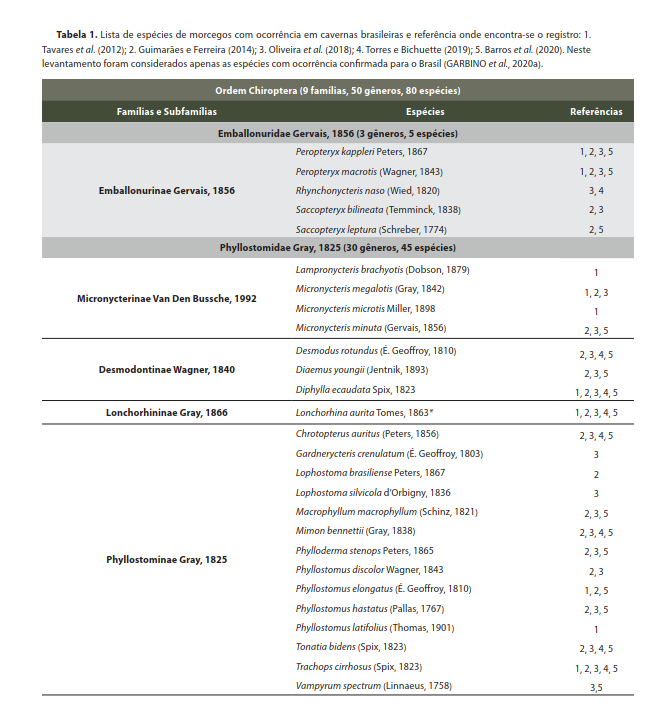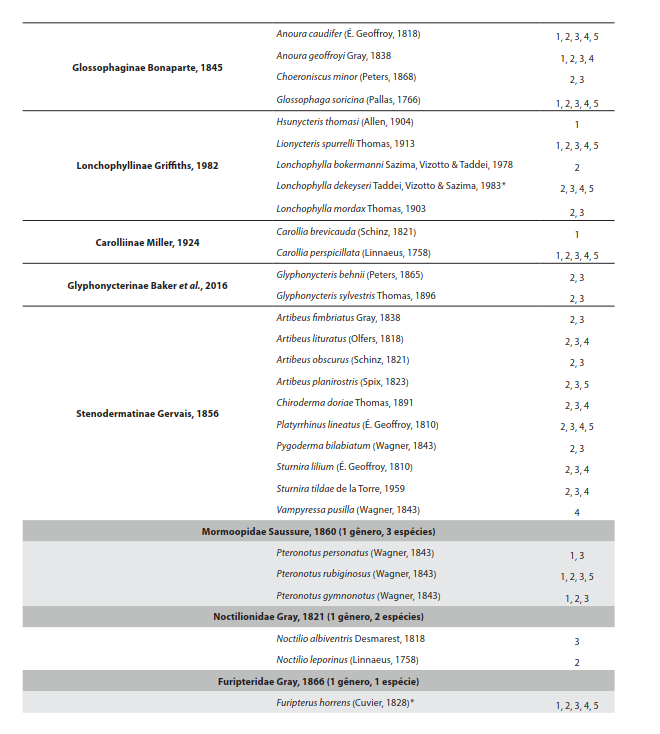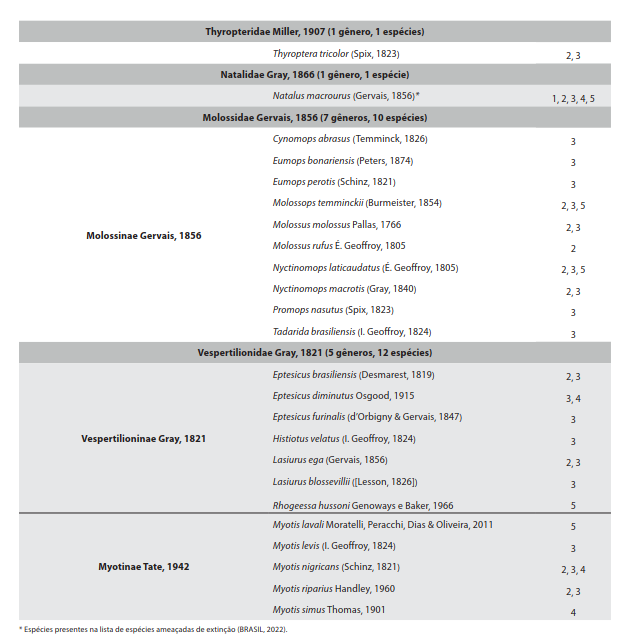According to the Sociedade Brasileira para o Estudo de Quirópteros (SBEQ – https://www.sbeq.net/) (GARBINO et al., 2022), the official list of Brazilian bats currently includes 181 species in 68 genera and 9 families. It is believed that about 45% (80 species) of bat species known from Brazil have already been recorded in caves, which are used permanently or temporarily as daytime shelters or feeding perches (PEREIRA; REIS; TAVARES, 2022).

The first study of bats in caves in Brazil was carried out by the naturalist Augusto Ruschi and published in 1952 in the Bulletin of the Museum of Biology Mello Leitão. During this study, Ruschi carried out a survey of the fauna associated with three caves, including pioneering data on cohabitation, behavior, and home range of cave bats in Brazil (RUSCHI, 1952). Since then, several researchers have continued to study cave bats in Brazil and despite the increase in recent years of studies on these animals in caves in the country, little is known about the basic aspects of their biology and their relationship with the cave environment. (PEREIRA; REIS; TAVARES, 2022). Bats play an important role in providing energy in cave environments. Bats use caves as shelter during the day, but they necessarily come out at night to feed thus, the guano (the excrement, solid waste, of sea birds and bats) deposited inside these shelters is considered an important trophic resource for maintaining the life of several groups of invertebrates in these environments, including troglobite species.
In permanently dry caves where water does not contribute to the energy supply, guano may become the only food source available It is worth mentioning, that bats are not observed in all caves and that the aspects that influence the selection of shelters by bats are still unclear, but it is believed that the choice takes into account the interaction of several factors, including physical factors (temperature, humidity, airflow, and light intensity), biotic factors (distribution and abundance of food, predation risks, competition), in addition to ecological factors of the species (KUNZ, 1982; TORQUETTI; SILVA; TALAMONI, 2017; BARROS; ENRICO; LOPES, 2020).
Tabela. List of bat species occurring in caves in Brazil. Source: PEREIRA; REIS; TAVARES, 2022 (Available in: http://editorarupestre.com.br/).





















